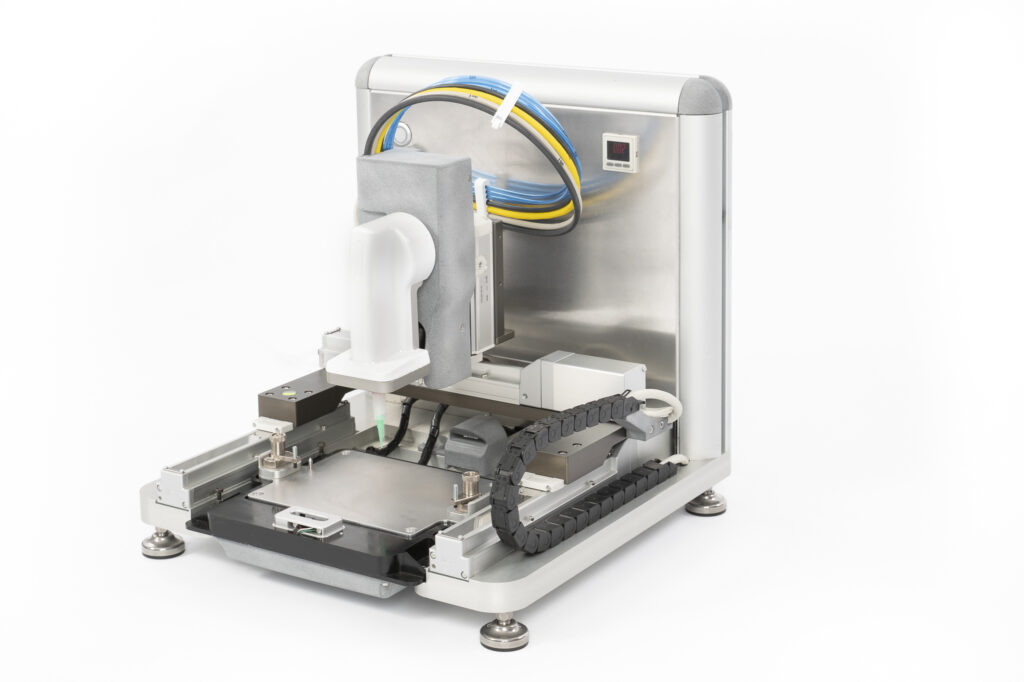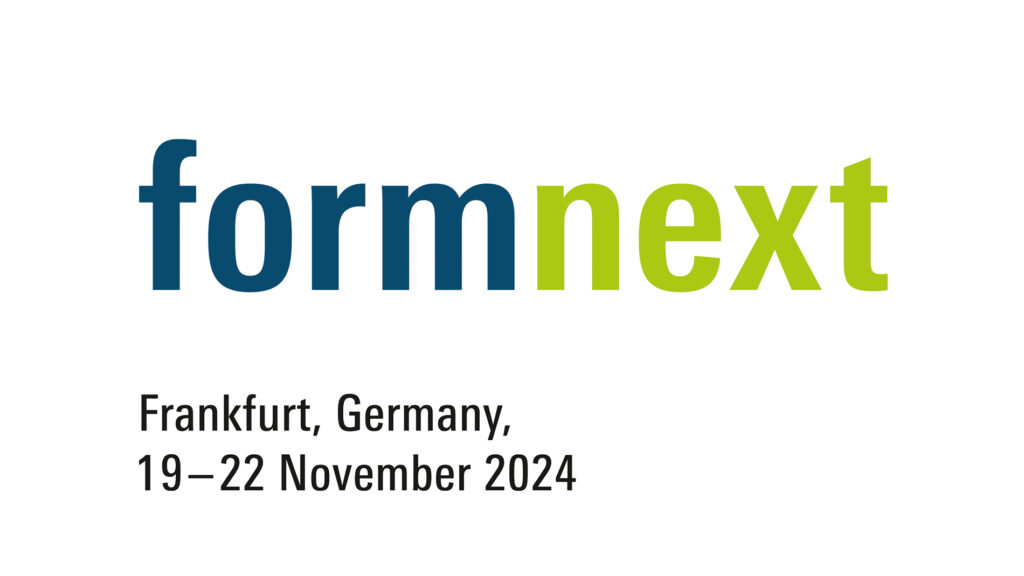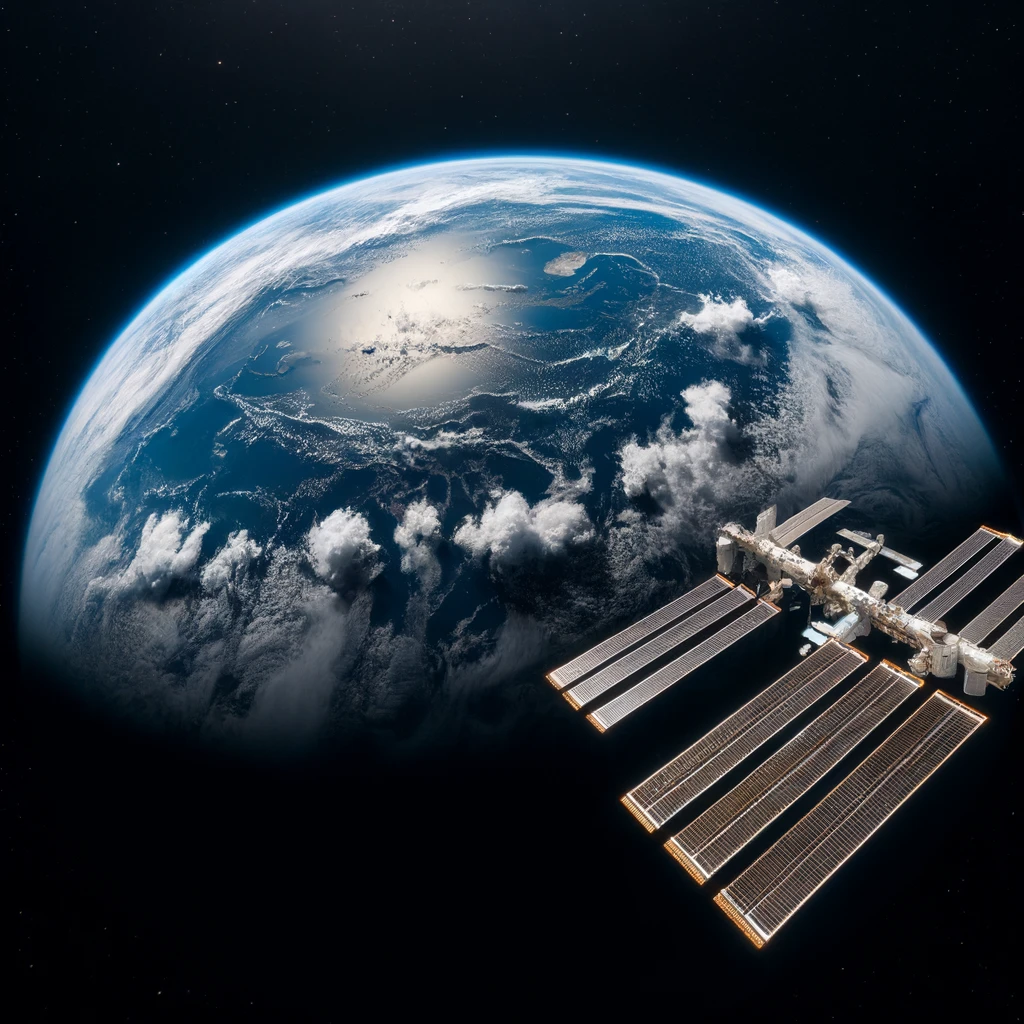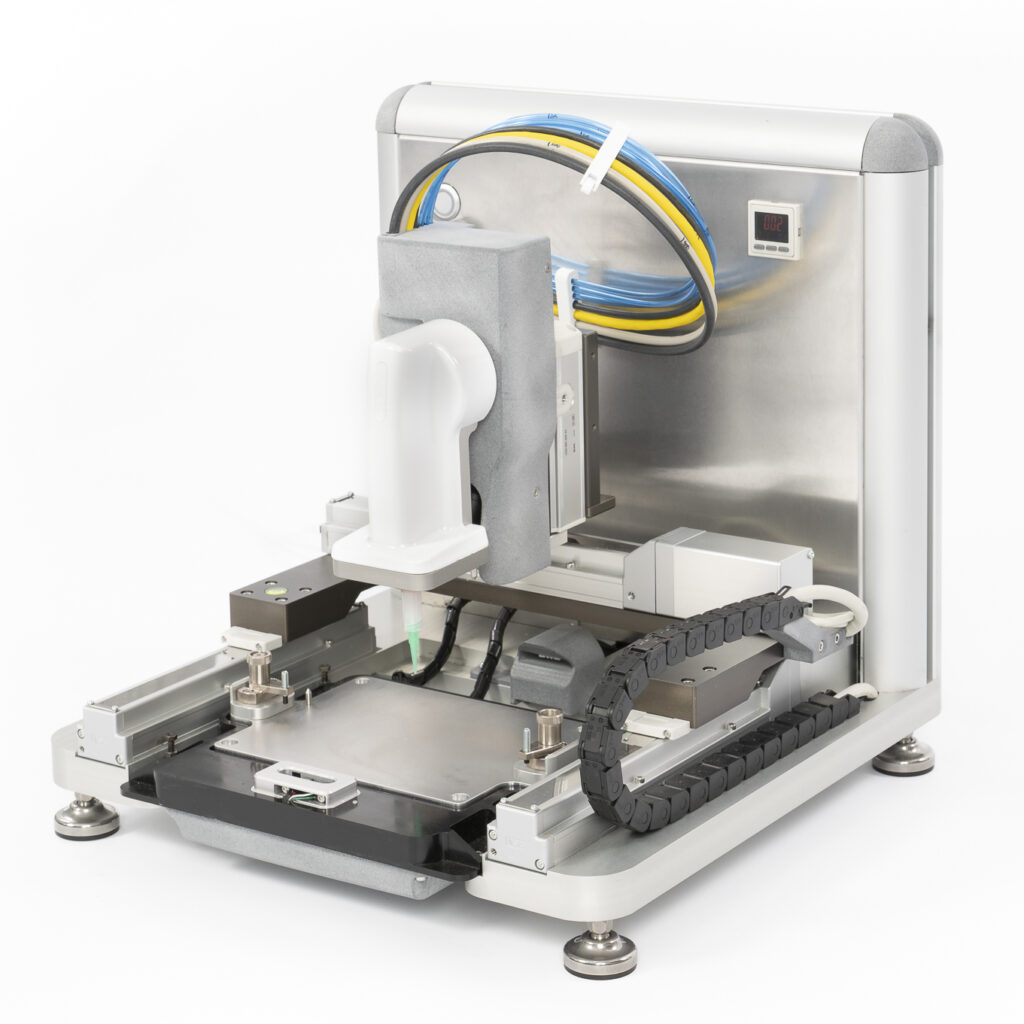BRINTER AM PROUDLY CONTRIBUTES TO KERATOPRINTER: ADVANCING CORNEAL REGENERATION WITH LASER ASSISSTED BIOPRINTING TECHNOLOGY

Advancing Regenerative Medicine Through Innovation Brinter AM is excited to be a key partner in the KeratoPrinter project—an initiative set to revolutionize corneal tissue engineering by integrating advanced LABP technology. This pioneering approach is designed to overcome critical challenges in treating corneal disorders and restoring vision Pioneering Innovation in Corneal Bioprinting with KeratOPrinter KeratOPrinter is […]
Brinter AM Technologies Proudly Joins the AM4Life Consortium: Pioneering Additive Manufacturing in Life Sciences

Advancing Healthcare Through Cutting-Edge Innovation Brinter AM Technologies is thrilled to announce our participation in the Additive Manufacturing for the Life Sciences (AM4Life) consortium, a visionary initiative funded by VINNOVA. By joining forces with over 35 leading partners from academia, industry, and healthcare, we are set to accelerate breakthroughs in 3D printing for medical applications. […]
The Critical Role of Standardized File Formats in Bioprinting and Pharmaprinting
Executive Summary Bioprinting and pharmaprinting are at the forefront of revolutionizing healthcare and pharmaceutical manufacturing by enabling groundbreaking innovations: However, the lack of standardized file formats for sharing printer settings, material data, and manufacturing protocols presents significant challenges. To address these issues, Brinter AM Technologies is actively developing and supporting the fully open-source file format […]
Brinter AM Proudly Contributes to STRONG-UR Consortium: Revolutionizing Tissue Reconstruction with Bioprinting

Advancing Regenerative Medicine Through Innovation Brinter AM is proud to be a key partner in the STRONG-UR project, which introduces a unique combination of novel manufacturing technologies and advanced biomaterials. This initiative is set to transform tissue reconstruction and make healthcare more accessible. With a primary focus on regenerative medicine, STRONG-UR is advancing the fabrication […]
ADVANCED ELECTRONIC MATERIALS// Multistep Fabrication of OECTs via Direct Ink Writing, With Performance Analysis Based on a Novel Measurement Protocol
https://onlinelibrary.wiley.com/doi/10.1002/aelm.202400742 Abstract Organic electrochemical transistors (OECTs) have been proven beneficial for bioelectronic applications. However, the demand for reliable and fast fabrication methods has not yet been fully met. In this work, OECTs are fabricated using direct ink writing (DIW). This method is cleanroom-free and can be done without using lithography techniques. These devices are characterized and […]
BIO INX, Puredyne, and AM Technologies by Brinter Unite to Revolutionize Standardization and Reproducibility in Extrusion Bioprinting

Turku, Finland – 20/11/2024 – AM Technologies by Brinter, an innovator in bioprinter manufacturing, Puredyne, a pioneer in extrusion printhead technology, and BIO INX, a leader in advanced bioinks, are proud to announce a groundbreaking collaboration aimed at achieving unparalleled standardization and reproducibility in extrusion-based bioprinting. This partnership builds upon the existing collaboration between BIO […]
Pioneering Low-Energy IR in 3D Bioprinting: The Red Light Revolution

As the field of bioprinting evolves, the demand for safer, more efficient, and versatile technologies continues to grow. While UV crosslinking has long been a staple in 3D printing, the use of low-energy light (red light) is emerging as a transformative innovation, offering distinct advantages for advanced material development and tissue regeneration. Why Shift to […]
Meet AM Technologies by Brinter during the 6th Australian Bioprinting Workshop.

December 2nd-3rd, 2024 Ultimo, Australia 6th Australian Bioprinting Workshop We’re excited to announce that AM Technologies by Brinter will be participating in AusBioprint 2024, Australia’s premier bioprinting and regenerative medicine event. This event will take place from December 2-3, 2024, bringing together experts and innovators in the bioprinting field. Join us at AusBioprint 2024 to […]
Meet AM Technologies by Brinter during your visit to #Formnext 2024.

November 19-22, 2024 Frankfurt, Germany Formnext Expo & Convention – Where ideas take shape We are thrilled to announce that AM Technologies by Brinter will be participating in Formnext 2024, the world’s leading event for additive manufacturing and industrial 3D printing, held in Frankfurt, Germany, from November 12-15, 2024. This premier global gathering will bring […]
Advancements, challenges and future of 3D Bioprinting – Interview by #3druck.com with Tomi Kalpio from AM Technologies by Brinter.
🚀 Exciting News: Brinter AM Technologies is Sending a 3D Bioprinter to the ISS! 🌍
We are proud to announce that Brinter Core will be onboard the International Space Station, advancing tissue manufacturing in space. This groundbreaking collaboration with Redwire Space NV and the European Space Agency (ESA) will explore the effects of microgravity on 3D-printed cell constructs, paving the way for new healthcare solutions both in space and on Earth.
Stay tuned for more updates as we push the boundaries of bioprinting and space exploration!
#Bioprinting #SpaceExploration #HealthcareInnovation #3DPrinting #ESA #ISS #Brinter
#Wiley, #Elsevier and #ScienceJournal – Polymer microsphere inks for semi-solid extrusion 3D printing at ambient conditions
Abstract https://doi.org/10.1016/j.jmbbm.2024.106783 Extrusion-based 3D printing methods have great potential for manufacturing of personalized polymer-based drug-releasing systems. However, traditional melt-based extrusion techniques are often unsuitable for processing thermally labile molecules. Consequently, methods that utilize the extrusion of semi-solid inks under mild conditions are frequently employed. The rheological properties of the semi-solid inks have a substantial impact […]
AM Technologies by Brinter participating to UPM Biomedicals 10th Annual Conference

October 24.10, 2024 Basel, Switzerland UPM Biomedicals 10th Annual Conference In recent years, UPM events have been popular, with individual events attracting over 800conference guests on-site. Participants includes respected researchers, leading industry professionals, and esteemed partners, to attend the 10th Annual UPM Biomedicals Conference.oin for insightful discussions, network and visit laboratories. If you have any […]
Meet AM Technologies by Brinter during your visit to Turku Biomaterials Days 2024 and Turku Imaging Day 2024.

October 23-25, 2024 Turku, Finland Turku Biomaterials Days 2024 – 24.-25.10.2024Biomaterials and Medical Devices Research of BioCity Turku. This year’s theme is “Nanomaterials for Biomedical Applications”, with presentations from renowned keynote speakers. With a comprehensive program covering a wide range of topics, the event promises to be a valuable learning experience. Turku Imaging […]
Meet AM Technologies by Brinter at Finnish Organ-on-Chip congress.

October 23-2, 2024 Tampere, Finland FIN OoC 2024 is an international forum for Organ-on-Chip, organoid and in silico experts. Building upon the success of the Helsinki Organ-on-a-Chip meeting in 2023 (hosted by HaikaLab, University of Helsinki), FIN OoC continues the tradition of bringing together national and international experts in Finland. The goal is to strengthen […]
Brinter AM Technologies will provide a 3D bioprinter for Advanced Tissue Manufacturing capabilities at the International Space Station (ISS) for an ESA project.

🚀 Exciting News: Brinter AM Technologies is Sending a 3D Bioprinter to the ISS! 🌍
We are proud to announce that Brinter Core will be onboard the International Space Station, advancing tissue manufacturing in space. This groundbreaking collaboration with Redwire Space NV and the European Space Agency (ESA) will explore the effects of microgravity on 3D-printed cell constructs, paving the way for new healthcare solutions both in space and on Earth.
Stay tuned for more updates as we push the boundaries of bioprinting and space exploration!
#Bioprinting #SpaceExploration #HealthcareInnovation #3DPrinting #ESA #ISS #Brinter
Brinter Core – Setting new quality standards

Brinter AM Technologies Showcasing at 17th European Workshop on Lignocellulosics and Pulp

August 26-30, 2024 Turku, Finland EWLP is a biennial event that brings together researchers, students, and industrial participants to discuss the latest advancements in lignocellulosic research. The conference covers a wide range of topics, including wood chemistry, lignocellulosic structures, analytical techniques, biorefinery technologies, and biotechnological approaches like Additive Manufacturing aka 3D Printing for developing new materials […]
Wiley – Experimental investigation of PCL-based composite material fabricated using solvent-cast 3D printing process
Abstract https://onlinelibrary.wiley.com/doi/abs/10.1002/pat.6416?casa_token=WQcKEetHLSgAAAAA%3Alg7G6z9JBMJM0wxuWkL16agBgvuFZag7mTRWy7pvGBYfCzHwxTvcgOtXUfH7yVbRAa9NuSTpdua5V7E Bone tissue engineering relies on scaffolds with enhanced mechanical properties, achievable through 3D printing techniques. Our study focuses on enhancing mechanical properties using a solvent-cast 3D printing method. For this, poly-ε-caprolactone (PCL) reinforced with polyhydroxybutyrate (PHB), and synthetic fluorapatite (FHAp) nanopowders were utilized, immersed in a solution of dichloromethane (DCM) and dimethylformamide (DMF). […]
Springer – Spatial Engineering of Mammary Epithelial Cell Cultures with 3D Bioprinting Reveals Growth Control by Branch Point Proximity
Abstract https://link.springer.com/article/10.1007/s10911-024-09557-1 The three-dimensional (3D) structure of the ductal epithelium and the surrounding extracellular matrix (ECM) are integral aspects of the breast tissue, and they have important roles during mammary gland development, function and malignancy. However, the architecture of the branched mammary epithelial network is poorly recapitulated in the current in vitro models. 3D bioprinting […]
Royal Society of Chemistry / Green Chemistry – Employing photocurable biopolymers to engineer photosynthetic 3D-printed living materials for production of chemicals
https://pubs.rsc.org/en/content/articlehtml/2024/gc/d3gc04264b#fn1 Abstract Photosynthetic microorganisms, such as cyanobacteria and microalgae, have great potential as living cell factories for chemical and fuel production. Immobilisation of cells is an effective technique for enhancing productivity and longevity of the production system, as well as aiding in the separation of cells from the medium. Alginate crosslinked with divalent ions is […]